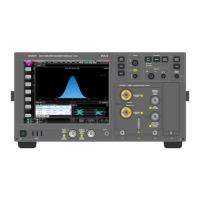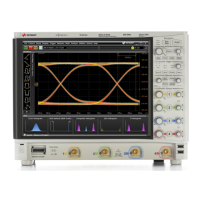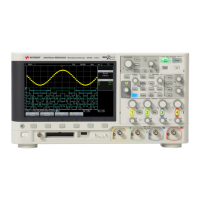62 Keysight InfiniiVision 1200 X-Series and EDUX1052A/G Oscilloscopes User's Guide
5 FFT Spectral Analysis
FFT Aliasing
When using FFTs, it is important to be aware of frequency aliasing. This requires
that the operator have some knowledge as to what the frequency domain should
contain, and also consider the sampling rate, frequency span, and oscilloscope
vertical bandwidth when making FFT measurements. The FFT resolution (the
quotient of the sampling rate and the number of FFT points) is displayed
on-screen when the FFT menu is open.
Aliasing happens when there are frequency components in the signal higher than
half the sample rate. Because the FFT spectrum is limited by this frequency, any
higher components are displayed at a lower (aliased) frequency.
The following figure illustrates aliasing. This is the spectrum of a 990 Hz square
wave, which has many harmonics. The horizontal time/div setting for the square
wave sets the sample rate and results in a FFT resolution of 1.91 Hz. The displayed
FFT spectrum waveform shows the components of the input signal above the
Nyquist frequency to be mirrored (aliased) on the display and reflected off the right
edge.
Nyquist Frequency and Aliasing in the Frequency Domain
The Nyquist frequency is the highest frequency that any real-time digitizing oscilloscope can
acquire without aliasing. This frequency is half of the sample rate. Frequencies above the
Nyquist frequency will be under sampled, which causes aliasing. The Nyquist frequency is also
called the folding frequency because aliased frequency components fold back from that
frequency when viewing the frequency domain.

